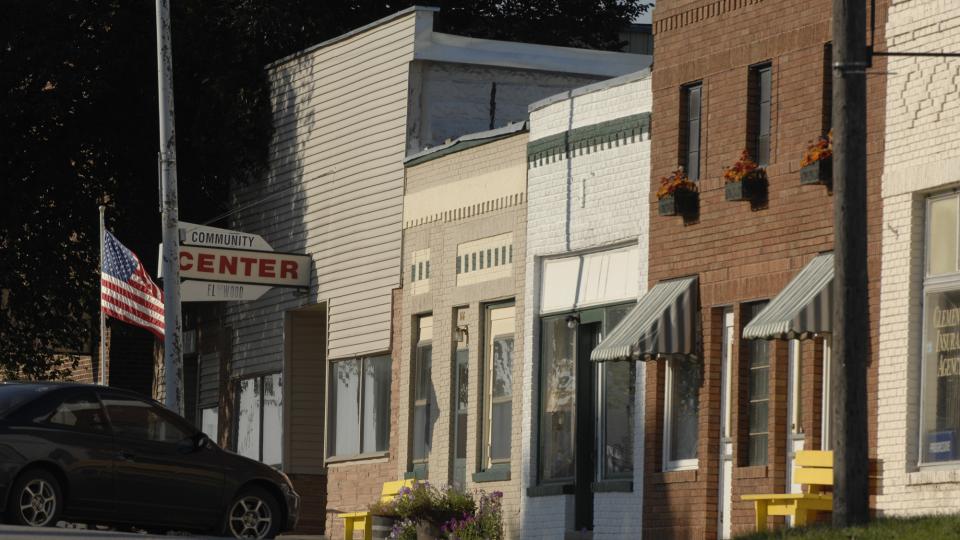
Rural Nebraskans are the most optimistic about their current situation and the future as they've been over the past 20 years, according to the 2015 Nebraska Rural Poll.
The 20th annual University of Nebraska-Lincoln poll was sent to 6,228 households in 86 Nebraska counties in April. Results are based on 1,991 responses.
Fifty-three percent of poll respondents said they were better off this year than five years ago, up from 50 percent last year. This equaled the highest proportion in all 20 years of the study, matched only in 2008. Only 15 percent said they were worse off.
This optimism was also reflected in how rural Nebraskans see the future, with 48 percent believing they'll be better off in 10 years. That is the highest percentage of all 20 years of the study and was up from last year's 44 percent. The percentage of those who think they'll be worse off decreased from 22 percent in 2014 to 17 percent.
The assessment of rural residents' current situation reflects a general pattern of optimism over the past eight years, with two declines occurring in 2009 and 2013. When looking to the future, there has also been a general trend of increasing optimism over the past 20 years, with two bigger declines in 2003 and 2013.
Results sometimes capture passing moods, events and perceptions about the state of the world. The 2015 poll was conducted in the spring.
"Things have been going well in Nebraska of late; a long drought has essentially ended and unemployment is really quite low," said Randy Cantrell, rural sociologist with the Nebraska Rural Futures Institute. "Beyond that, and despite the occasional dip, reported optimism has generally been trending upward."
In addition, rural Nebraskans are less likely to agree that people are powerless to control their own lives than they were last year. The proportion that either strongly agree or agree with the statement declined from 32 percent last year to 26 percent this year. Over one-half (55%) of rural Nebraskans disagree or strongly disagree with that statement.
Elsewhere, the Rural Poll's findings were generally similar to past years':
Rural Nebraskans have increased satisfaction with their ability to afford their residence as compared to last year, from 65 percent in 2014 to 70 percent this year.
Rural Nebraskans’ satisfaction with clean air and clean water declined this year. The percent satisfied with clean air declined from 85 percent last year to 80 percent this year. And, those satisfied with clean water declined from 80 percent to 76 percent.
Rural Nebraskans continue to be most satisfied with their marriage, family, friends, religion/spirituality, and the outdoors. They continue to be less satisfied with job opportunities, current income level and financial security during retirement.
Certain groups remain pessimistic about their current and future situation. Persons with lower household incomes, older persons, and persons with lower educational levels are the groups most likely to be pessimistic about the present and the future. Persons living in or near the largest communities are more likely than persons living in or near smaller communities to be optimistic about the future.
People with lower education levels are more likely than those with more education to believe that people are powerless to control their own lives. Thirty-seven percent of persons with a high school diploma or less education agree that people are powerless to control their own lives. However, only 19 percent of persons with at least a four-year college degree share this opinion.
The Rural Poll is the largest annual poll of rural Nebraskans' perceptions on quality of life and policy issues. This year's response rate was 32 percent. The margin of error is plus or minus 2 percent. Complete results are available here.
"With its 20-year history, the poll has a collection of data about rural trends and perceptions that is unmatched in the country," said Becky Vogt, survey research manager who has worked with the Rural Poll since its second year.
Although the Grand Island area -- Hall, Hamilton, Howard and Merrick counties -- was designated a metropolitan area by the U.S. Census Bureau in 2013, the Rural Poll continues to include those counties in its sample. Dixon and Dakota counties in northeast Nebraska also were added to the poll last year.
The university's Department of Agricultural Economics conducts the poll in cooperation with the Nebraska Rural Futures Institute with funding from Nebraska Extension and the Agricultural Research Division in the Institute of Agriculture and Natural Resources.
— IANR